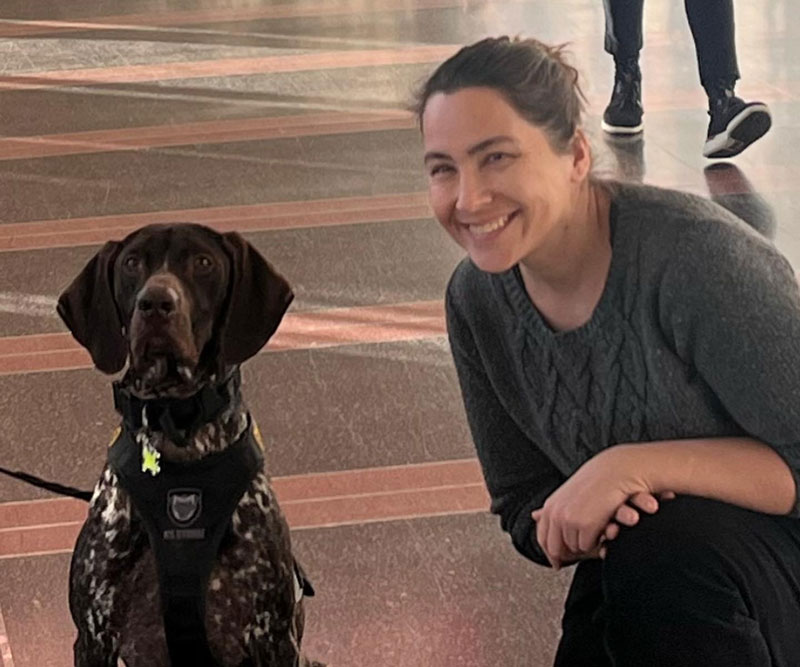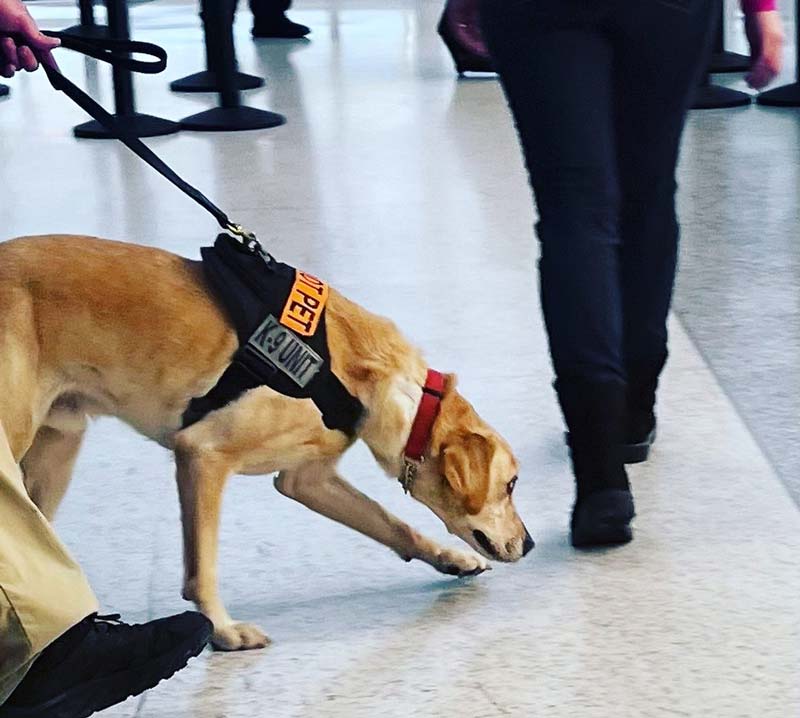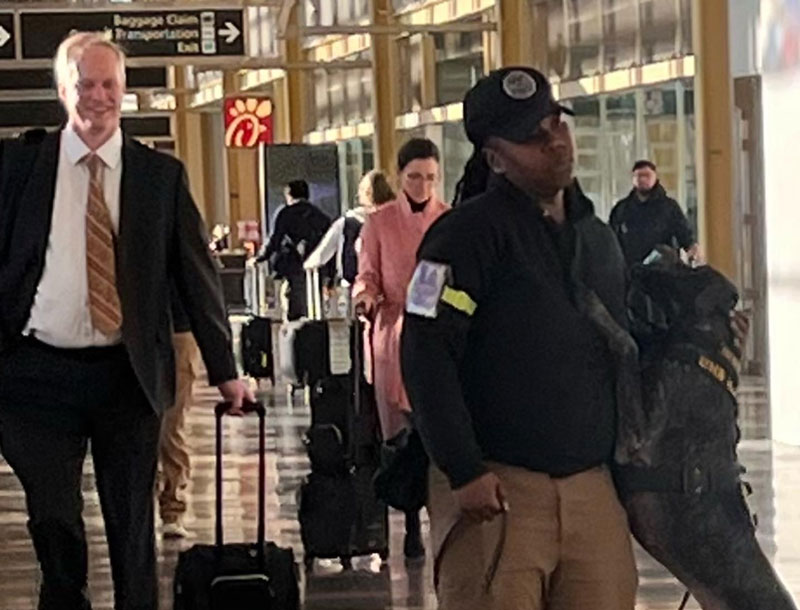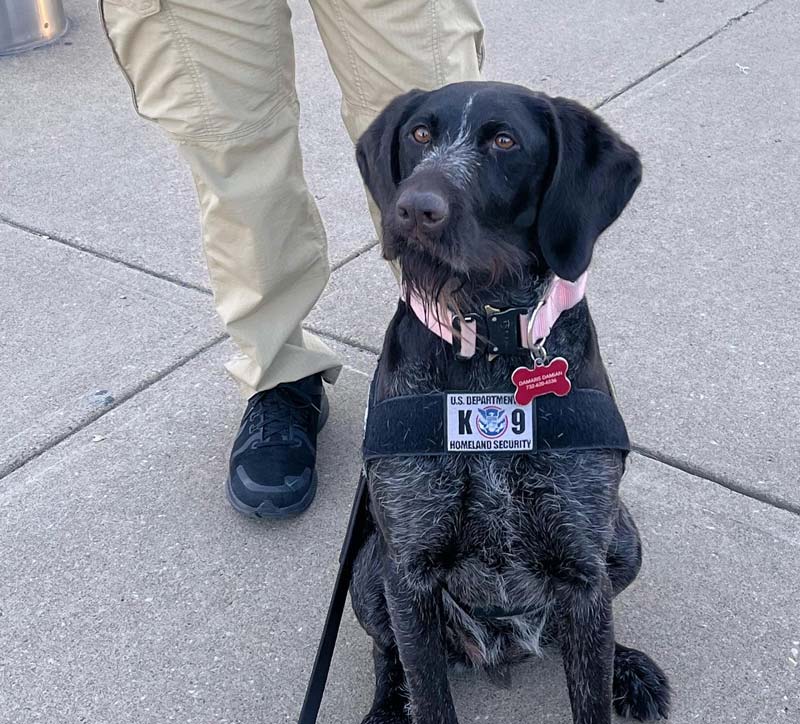
Volunteering as a TSA K9 Decoy: Unexpected Lessons in Life and Leadership

This post comes from Heather Ingram, a Project Manager at RELI Group in our National Security and Safety sector.
One of the most rewarding experiences I’ve had while working with the Transportation Security Administration (TSA) has been volunteering as a decoy for the K9 unit at Ronald Reagan National Airport. Initially, I signed up simply because the dogs are adorable, but I quickly discovered that I shared a common ethos with the K9 lead instructor. I began to see fascinating parallels between my work in change management processes and training dogs to detect threats.

Early Mornings and TSA K9 Secret Agent Vibes
Volunteering as a TSA K9 decoy requires getting an early start—by 5:30 a.m., I’m at the airport employee parking lot. Instead of heading to the TSA Security Integration Facility, I board the shuttle with TSA officers, pilots, attendants and ground crew—sometimes even a few confused passengers. The meeting with the K9 liaison feels a bit like a secret agent rendezvous. The handlers don’t know the identity of the decoys, so I make sure to blend in while the liaison discreetly places the decoy element (usually hidden in my bag or on my person). Then, we head to the terminal or checkpoint, and while I keep a low profile, I can’t help but silently cheer on the TSA K9 dogs.

The Challenges and Joys of Being a K9 Decoy
The most difficult aspect of this role as a K9 decoy is the discipline required to resist engaging with the dogs—after all, I’m playing the “bad guy.” But the reward comes when I hear the dogs’ paws scrambling after me after they’ve “caught my scent,” followed by praise from the handler and the distinct sound of their Kong toy hitting the tile. That’s the sign of a job well done! Another gratifying part of the experience is seeing the smiles of the other passengers around me when the dogs catch me. The dogs’ excitement is contagious, and it feels like we’re all in it together, helping train these pups while ensuring everyone’s safety.
Coaching Through Setbacks
The dogs’ abilities never cease to amaze me. What has been even more fascinating is how handlers and canines are coached to work as a unit in K9 training. I found the way the instructor coached to be both insightful and surprisingly applicable to both work and life. When I asked him to tell me a bit more, he explained that when training a new dog, there’s a balance between control and freedom. Keeping the dog in check without holding them back from completing their task is crucial. He went on to explain how the challenge is further intensified by external factors—like a crowded airport or personal distractions—much like the stress and distractions we often face in our own professional lives.

Empathy in Leadership
What struck me the most was the instructor’s perspective on stress, which resonated deeply with me. He explained that new TSA K9 handlers are often under additional pressure when they’re on probation and being evaluated. The K9 handler role is a dream job for many, which, as you can imagine, can raise the stakes. This added stress, combined with the inherent stress of security work, can make performing well feel even more challenging. However, for those that master their stress, it can also drive performance.
What made the instructor’s approach so impressive was the way he modeled handling this pressure. I watched him work in a terminal already crowded in the pre-dawn hours. His feedback was clear, concise, actionable and real-time. Watching him coach, I couldn’t help but reflect on how this approach mirrors effective leadership. It reinforced for me the invaluable role of a leader who supports their team as people and maintains a focused commitment to excellence.
If you’re interested in learning more about how to become a TSA K9 hHandler or other opportunities with the TSA, visit the TSA Careers page on their website.

The Leadership Challenge
Managing through stress and uncertainty is a complex challenge. When transitioning from a role as a high-performing individual contributor to a manager, our natural instinct is often to take control. However, as leaders—whether in the workplace, coaching or even parenting—it’s essential to resist the urge to micromanage. Effective leadership often requires us to step back, give others space to learn and fail, and offer constructive and compassionate feedback to help them course correct.
Leading with empathy and candor fosters trust and respect, which in turn drives high performance. When team members feel safe enough to admit their challenges and trust their leaders to guide them, they not only perform at their best, but they are also more motivated to do so.
This experience with the TSA K9 unit was a wonderful reminder of the importance of leadership that balances empathy with accountability. It’s a reminder that when we, as leaders, show both compassion and candor, we create an environment where our teams can thrive.
Ready to transform your leadership approach? Connect with RELI Group today—contact us now.

















